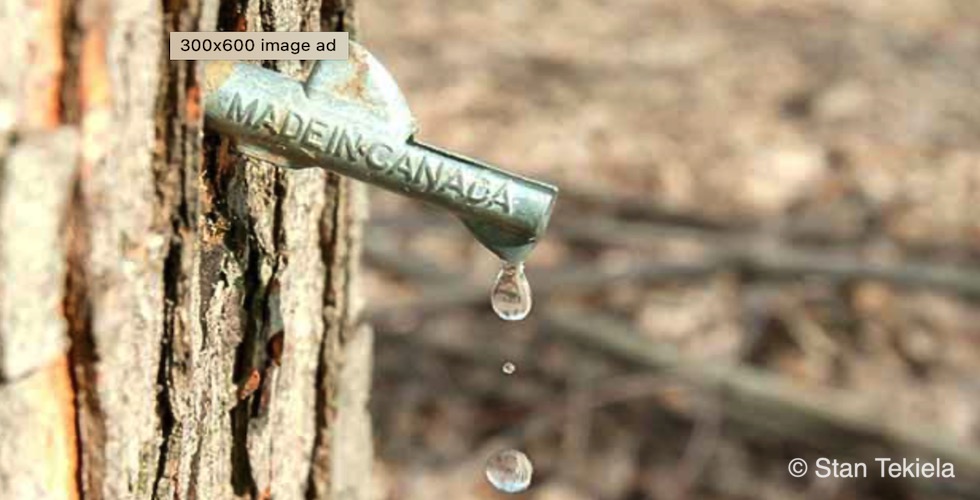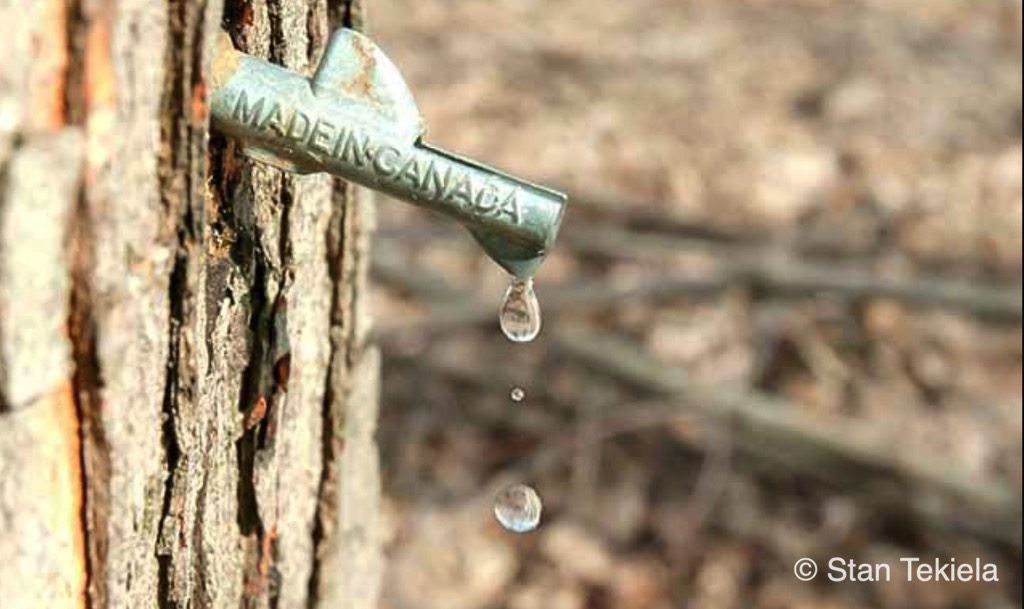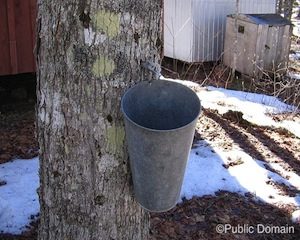
March Chores and Maple Syrup
In this week’s column, Stan Tekiela talks to us about maple syrup, a uniquely American product.
I love this time of year. March is a transition month and often heralds the beginning of spring, even here in the frozen north. Many of our backyard birds are singing their spring mating and territorial songs. Some early migrating birds, such as Bluebirds and Horned Larks, are already arriving. The male Goldfinches have molted their old, drab, gray feathers for a new coat of bright yellow feathers.
 It is also the time to get out and clean out your Wood Duck boxes or to put up new ones. The Wood Duck, along with the Common Goldeneye and the Hooded Merganser, is a small duck species that nests inside cavities. Providing these ducks with a safe, warm, and dry place to nest is essential. So, before the ice is off your pond, it’s always good to inspect your wooden boxes, clean out any old nesting material, eggs, and such and put in new fresh wood chips. This will welcome back our woodies when they return.
It is also the time to get out and clean out your Wood Duck boxes or to put up new ones. The Wood Duck, along with the Common Goldeneye and the Hooded Merganser, is a small duck species that nests inside cavities. Providing these ducks with a safe, warm, and dry place to nest is essential. So, before the ice is off your pond, it’s always good to inspect your wooden boxes, clean out any old nesting material, eggs, and such and put in new fresh wood chips. This will welcome back our woodies when they return.
It’s also maple syrup time. This uniquely American product has a long history dating back to early indigenous people. No one knows for sure how, when, or where maple syrup gathering started, but there are a number of nice native legends surrounding its origins. One of the most popular of these stories is about using the sap from a maple tree to boil venison.
Sugar Maple trees (Acer saccharum) are the preferred trees to tap for their watery sap, but others also yield high-quality sap that can be boiled down to make syrup. At my nature center, we tap Silver Maples (Acer saccharinum), but we have also tapped the lowly Box Elder (Acer negundo). The Box Elder is a tree people seem to love to hate.
Tree sap should not be confused with tree resin. Evergreen trees are well known for producing a yellow colored sticky resin that when fossilized is called amber. Sap from trees is a clear liquid consisting of 98 percent water and only 2 percent sucrose. This means that when a tree is tapped you need to collect about 40 gallons of sap to boil down to just 1 gallon of syrup. With some trees the percentage of sugar is even less, and you need to collect 50 or 60 gallons to make one gallon of syrup.
 So why does the sap run at this time of year? First of all, only maple trees in northern climates are tappable to collect the sap. Typically during the month of March, we have nighttime temperatures that are below freezing and daytime temperatures above freezing. It is this freeze-and-thaw cycle that produces the “flow” of sap that allows us to collect it. This means that regions of the U.S. that don’t have freezing winters can’t tap their trees for sap.
So why does the sap run at this time of year? First of all, only maple trees in northern climates are tappable to collect the sap. Typically during the month of March, we have nighttime temperatures that are below freezing and daytime temperatures above freezing. It is this freeze-and-thaw cycle that produces the “flow” of sap that allows us to collect it. This means that regions of the U.S. that don’t have freezing winters can’t tap their trees for sap.
This combination of freezing and thawing is so critical that if the weather doesn’t cooperate, we get no sap. For example, we have had many years where we went right from winter into spring with warm temperatures day and night and the trees produced no sap for us.
A tree needs to be between 30-40 years of age to be large enough for tapping. One of these trees can produce between 9 and 15 gallons of sap if the season is good. Many people tap between 5 and 100 trees. At my nature center, we usually tap about 25 trees and collect many gallons of sap.
The Canadian province of Quebec is the largest producer of maple syrup. Nearly three quarters of all the maple syrup produced in the world comes from there. In the U.S., the state of Vermont is the largest producer, representing nearly 6 percent of the world’s supply of maple syrup.
If you get a chance, visit your local nature center or sugar bush this March and learn more about this uniquely American tradition and product.
If you enjoyed Stan’s post, you may consider one of his amazing nature books: Majestic Eagles; The Lives of Wolves, Coyotes, and Foxes; or Backyard Birds: Welcomed Guests at our Gardens and Feeders. Young readers will delight in his award-winning children’s books, such as Whose Butt?, Critter Litter, and his latest, Jump, Little Wood Ducks.
You can follow Stan on Facebook and Twitter, or contact him via his web page. Stan’s nationally syndicated NatureSmart Column appears in more than 25 cities spanning 5 states (Minnesota, Wisconsin, Michigan, Illinois, and Pennsylvania) and is circulated to more than 750,000 readers. Stan’s author page on Amazon features some amazing videos! Check them out, and follow him for updates.
For more stories about wildlife and nature, sign up for our newsletter now!
More posts from Stan:
Indigo Bunting—A Familiar Summer Visitor
The Nesting Behaviors of Sandhill Cranes
Big Birds, Baby Birds, Birds Everywhere
Stan Tekiela observes Marsh Wrens
The Magical, Mystical World of Sandhill Cranes


